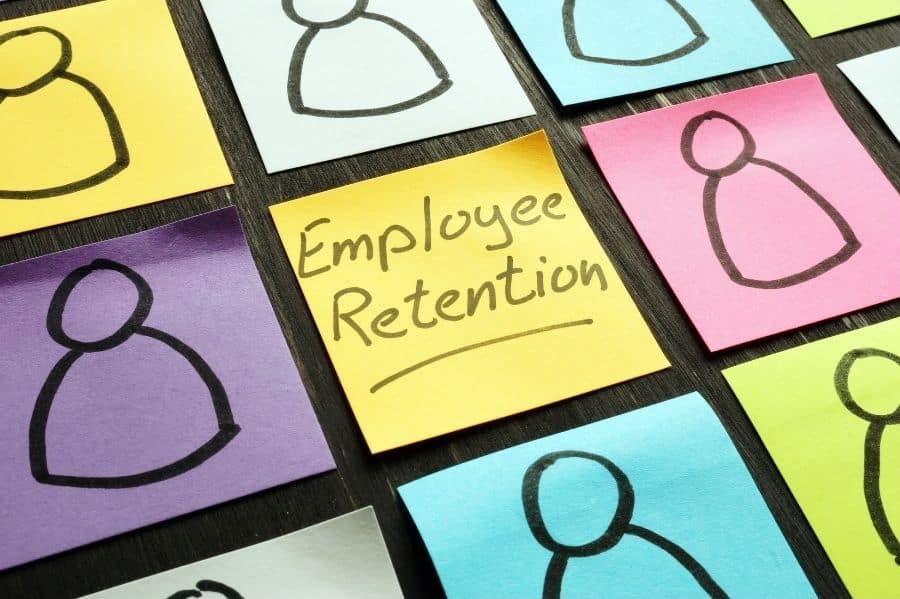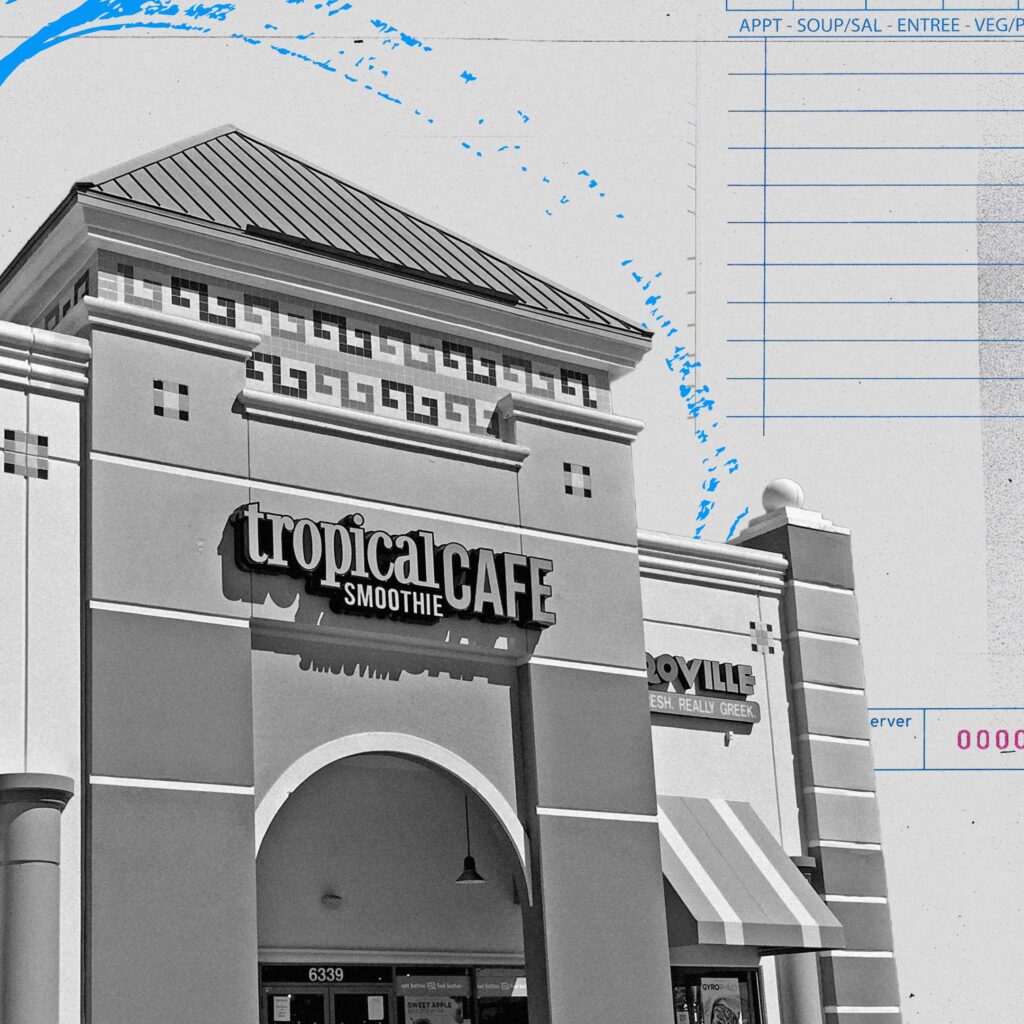Recruitment and retention strategies go hand in hand. Your hiring strategy must focus on hiring the right employees for your restaurant rather than just filling an open position. And a comprehensive approach to employee retention must be built into your hiring strategy.
In Part 1 and Part 2 of this three-part hiring series, you learned about optimizing your job postings and how to develop a hiring process. Part 3 focuses on retention.
Why is employee retention important?
Many restaurant operators don’t know their retention statistics, such as the average tenure in their restaurants or their turnover cost. But when you to look at average turnover cost industry wide, you understand the importance of employee retention. According to the National Restaurant Association, the average cost of restaurant turnover in 2021 was $1,869 per hourly employee, $8,119 per manager and $14,689 per general manager.
Employee turnover affects your profit margin. This is why employee retention matters. Consequently, it’s imperative that you hire with a retention mindset.
Why a comprehensive approach to employee retention in hiring is critical
Retaining current employees is a crucial component of optimizing your labor costs. You could be doing everything right when it comes to forecasting and scheduling the right number of employees, but if your restaurant group has a high turnover rate, then you’re wasting valuable labor dollars.
However, retention must also be part of your hiring strategy. It’s an employee market, so your hiring strategy must focus on hiring the right employees to reduce your turnover and providing employees with a reason to join your restaurant group rather than a competitor’s.
If you need to develop an employee retention program for your restaurant group, consider building some of the following concepts into your retention strategy for employees.
Use referral bonuses
Referral bonuses don’t always work to your advantage, so if you choose to use referral bonuses, ensure that bonuses are process driven. A process-driven referral bonus communicates, “We value our employees. We have the best employees in the world. We want more employees like you and we’re willing to pay to get them in here.”
A referral bonus program must also be consistent. Otherwise, it can affect employee morale. If you turn the program on and off depending on your need, you’re communicating to your employees that you can’t fill this job and need any help you can get. While consistency in a referral bonus program communicates that you want more people like your present employees.
Additionally, the amount of the referral bonus must make an impact.
If you’re offering $50, don’t expect a flood of new applicants. Ensure that you’re offering enough money so that the employee can use it to buy something fun or impact the family budget. $200 is an amount that will motivate most hourly employees to refer their friends. Remember that the bonus is only paid after the new employee stays for a period you specify, e.g., six months.
When you pay the referral bonus, make that part of your process too. If you pay by direct deposit, the employee might not even notice the extra pay. Make sure the bonus is separate from regular pay. Write a check and put it in an envelope with a nice card on which you write something meaningful. And then during your pre shift meeting, talk about it, Make a big deal of it. Don’t lose the traction because, again, referral bonuses need to be ingrained into your culture.
Train your managers to hire the right employees
One of the reasons restaurants have high turnover rates is that they don’t have a hiring strategy or process in place. There’s just a never-ending cycle of filling positions as employees leave. Part of a comprehensive approach to employee retention is training your managers to hire the right employees.
When you think about the turnover cost, it’s critical to hire the right employees out of the gate. Managers must be able to identify applicants who are good cultural fit. One major brand has the applicant first meet the manager, then shadow three people in various positions. Those employees have the potential to offer the best assessment of the applicant from a cultural fit aspect and provide invaluable feedback. If an employee is not a cultural fit, that person is going to be your next turnover statistic.
Managers must also be honest and transparent about job, the culture, and applicants’ duties during the interview. Bussers, for example, are always difficult positions to fill. If the manager doesn’t tell the applicant during the interview that it’s the busser’s job to unclog the toilet when it gets clogged, that person may quit the first time that occasion occurs. Why? Because the employee wasn’t informed at the interview that it was part of the job.
Similarly, if server tips are low because your restaurant is frequented by students or seniors on a fixed income, the manager must be honest. If servers’ tip expectations aren’t being met, they’ll leave. Managers can’t avoid those types of tough questions at the interview just to fill an opening. Lack of transparency during interviews will just lead to higher turnover.
Hopefully, when you hired your managers, they were passionate about what they do. Because that passion for their jobs and your restaurants will come through to applicants.
Offer benefits that employees want
If you want to know how to retain employees in an organization, you might want to start with offering benefits that employees want. Historically, restaurants have not offered benefits to hourly employees. But the pandemic and resulting hiring crisis has prompted restaurants to provide benefits to their hourly workers.
To attract applicants to your restaurants, you must know what benefits they want. Rather than assuming what they want, ask them. Gather and analyze data. Survey employees and applicants.
Try releasing benefits one at a time. Communicate what the benefit entails. Create marketing materials so they understand the benefit.
Be creative with your benefits. If you can’t afford a full health insurance package, consider benefits that are popular among many restaurant employees, such as:
- Same-day pay
- Tuition reimbursement
- Paid time off
- Four-day workweek
Give employees a career path in your comprehensive approach to employee retention
Providing a career path might be a challenge because you must balance it with managing expectations. But if you don’t offer a career path, if you aren’t taking the time to create their career path, your employees are not going to see the opportunity for growth.
And they will leave. Sooner rather than later, they’re going to leave.
Consequently, you must develop career paths for individuals, and then manage their expectations using one-on-ones meetings. In this way, you keep in regular contact with your employees as individuals. Be prepared to discuss what you’re doing to try to keep them going on their career paths. Then invest in them by working on the skills that you’ve associated with each step on their career paths. By doing this, you’re building trust.
Build relationships with your staff
The constraints that restaurant operators have – lack of time and energy resources – is real. But no matter how real that shortage is, relationships must be built. You must make time. Building relationships with your staff is a crucial part of comprehensive approach to employee retention It’s the number one insurance toward retention. But it’s a very demanding time investment.
Learn the motivations of your employees. Start with your store managers. It’s important to know what motivates your managers. Everyone is different. Maybe they’re motivated by skills development, or money, or title. Whatever it may be, you must figure out what it is. Then, you must help your managers attain their motivations.
You must set them up for success. And then you must reward them for that success.
Having performance-based metrics for location success is so important, because if you can get them to take ownership of your financial metrics, that investment in setting up the manager for success will pay for itself.
In turn, you must train your managers by example to build relationships with their hourly employees. In an employees’ market, managers must be more attentive to employees’ needs. You, as an owner/operator or above-store leadership, aren’t giving that same treatment to your managers, your managers are going to treat their direct reports, exactly how you treat them.
Provide professional development
Provide professional development for both store managers and hourly employees. After onboarding your employees, focus on investing in them for the long haul as part of your retention strategy. Create opportunities for career growth, and then develop staff members to build their value to your restaurant group. If your employees don’t feel that there is room for growth and learning, your turnover rate will likely increase.
Providing ongoing development is how you cultivate loyal, committed employees. But that doesn’t mean just at the entry level. Your development initiatives must begin at the store manager level. An unprepared manager who you do not properly develop will not stay long. That not only impacts your turnover costs, but impacts employee morale, resulting in greater staff turnover. Also, if you promote a poorly trained replacement manager, you’ll be in a never-ending cycle of manager and employee turnover.
As previously mentioned, 90% of restaurant managers start at the entry level. Think of all new hires and existing employees as potential managers, then develop and train them accordingly.
If one of your employees is interested in being a lead line cook, start that person working on prep projects, then progressively add jobs that move the employee forward. By doing so, you’re not only offering the employee development, but you’re also building the staff member’s value to your restaurant group.
Offer regular raises at part of your comprehensive approach to employee retention
With rising food costs and the fallout from the pandemic, so many restaurants are struggling to be competitive. You might not be in a financial position to offer regular rates.
However, in today’s reality, if you aren’t strategic about employee retention and offering regular raises, you’re going to lose good people. Again, think about the turnover cost of losing one employee. You can’t afford not to offer regular raises as part of your retention strategy.
Conclusion
In the long run, it makes sense to incorporate a comprehensive approach to employee retention. The cost of turnover is just too high. Your retention strategy needn’t break the bank. It’s not just about raises, referral bonuses or other cash incentives. Don’t forget the non-monetary strategies – benefits like same day pay and four-day workweeks, building relationships with your staff, ensuring employees are a cultural fit before you hire them, and providing them with professional development and a career path.
Hiring and retaining employees is a major challenge for all restaurant operators. But building innovative employee retention strategies into your hiring strategy is the first step in both hiring the right employees and encouraging them to grow with your restaurant business.
R365 HIRE makes it easy to attract, hire, and onboard the best employees for your restaurant group and is part of the Restaurant365 all-in-on restaurant management suite that incorporates accounting, inventory, scheduling, operations, payroll +HR, and reporting within one cloud-based platform. R365 integrates with your POS system, vendors, and bank.



